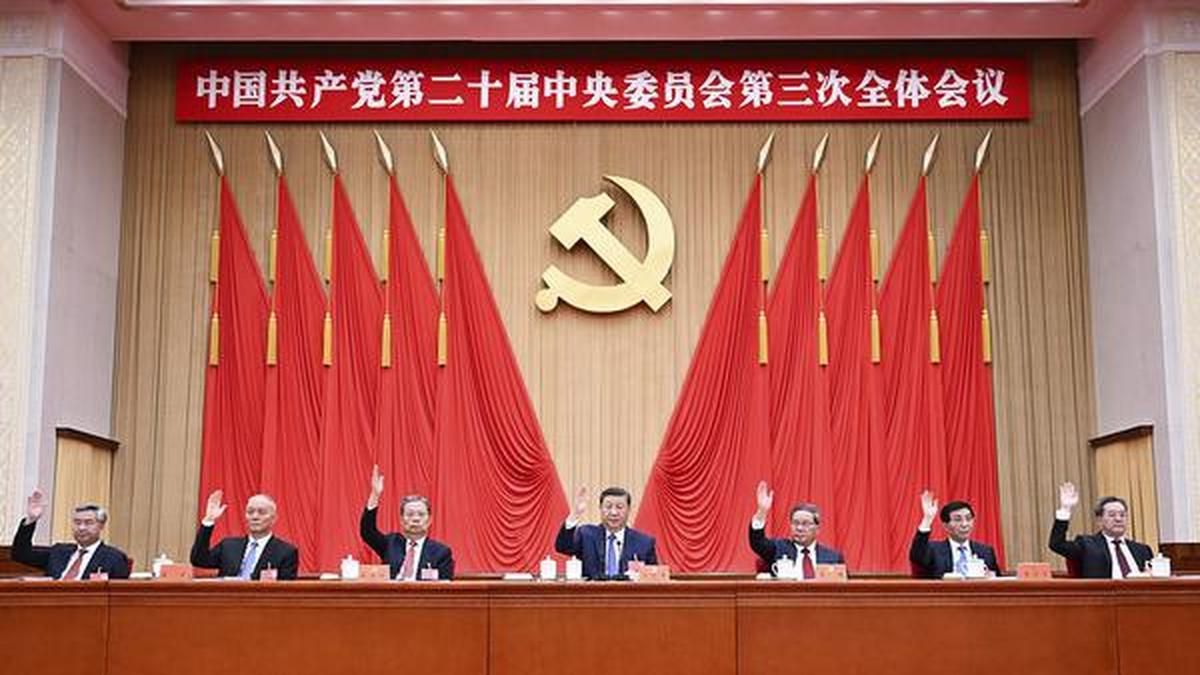
China’s top leaders vow to improve confidence in its slowing economy
The Hindu
China's Polit Bureau endorses long-term economic strategy, focusing on consumer spending, weeding out unproductive companies, and boosting financial markets.
China’s powerful Polit Bureau (PB) has endorsed the ruling Communist Party’s long-term strategy for growing the economy by encouraging more consumer spending and weeding out unproductive companies to promote “survival of the fittest.”
A statement issued on July 30 after the meeting of the 24 highest leaders of the party warned that coming months would be tough, perhaps alluding to mounting global uncertainties ahead of the U.S. Presidential election in November.
“There are still many risks and hidden dangers in key areas,” it said, adding that the tasks for reform and stability in the second half of the year were “very heavy.”
The PB promised unspecified measures to restore confidence in financial markets and boost government spending, echoing priorities laid out by a wider meeting of senior party members earlier in July. After that gathering, China’s central bank reduced several key interest rates and the government doubled subsidies for electric vehicles bought to replace older cars as part of the effort to spur growth.
The PB’s calls to look after low- and middle-income groups reflect pledges to build a stronger social safety net to enable families to spend more instead of socking money away to provide for health care, education and elder care. But it provided no specifics on how it will do that.
“This sounds promising on paper. But the lack of any specifics means it is unclear what it will entail in practice,” Julian Evans-Pritchard of Capital Economics said in a commentary. The party’s plans for how to improve China’s fiscal policies at a time of burgeoning local government debt were “short on new ideas,” he said.
Instead, the emphasis is on moving faster to implement policies such as the government’s campaign to convince families to trade in old cars and appliances and redecorate their homes that includes tax incentives and subsidies for purchases that align with improved efficiency and reducing use of polluting fossil fuels.

The Union Budget unveiled on February 1, 2025, has come at a time of unprecedented global uncertainty and a flagging domestic economy. The real GDP growth is estimated at 6.4% for 2024-25 and between 6.3-6.8% for 2025-26, a far cry from >8 percent growth required annually to make India a developed nation by 2047. While much attention has been devoted to the demand stimulus through income tax cuts, not enough is said about the proposed reforms in urban development, tariff rationalisation, and regulatory simplification aimed at making Indian cities and corporates more competitive. Since the majority of economic activity is located in cities (urban areas account for ~55% of GDP) and produced by large corporates (~40% of the national output and 55% of India’s exports), the above-mentioned reforms have a pivotal role in improving India’s trend growth rate. Below we unpack each reform.












